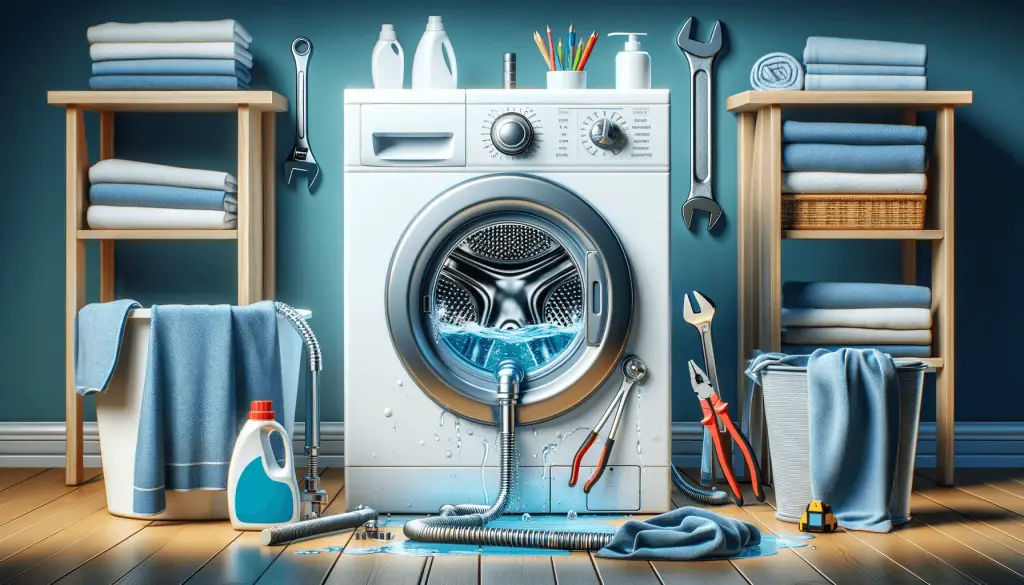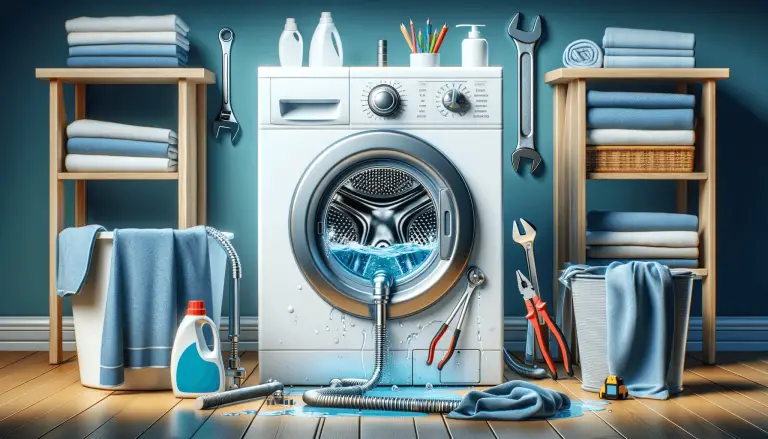Encountering a washing machine that isn’t draining can be frustrating and time-wasting.
This article will walk you through various troubleshooting methods to help you identify and fix the problem, potentially saving you the cost and hassle of calling a professional.
Key Summary of this article:
| Step | Action |
|---|---|
| 1. Safety Precautions | Switch off and unplug the machine. |
| 2. Drain Hose & U-Bend | Check and clear blockages in the drainage hose and U-bend pipe. |
| 3. Internal Inspection | Inspect internal pipes and drainage system; clean the drainage pump filter. |
| 4. Power & Detergent | Ensure adequate power supply; use correct detergent amount. |
| 5. Load Distribution | Evenly distribute laundry inside the drum. |
| 6. Mechanical Issues | Check for problems with the rotor, drive motor, or belt. |
| 7. Manual Draining | If needed, manually drain the machine using a bucket or hose. |
| 8. Master Reset | Perform a master reset according to the manufacturer’s instructions. |
| 9. Professional Help | If issues persist, contact a professional engineer or appliance repair technician. |
If you want to delve deeper into a step-by-step guide to fixing a washing machine that isn’t draining, then keep reading.

Why is my washing machine not draining
Whether your washing machine is not draining completely or it is not draining at all, the problem is usually one that you can fix yourself.
Below are reasons why your washer is not draining:
- Clogged or Damaged Drain Hose: A frequent cause of drainage problems is a blockage in the drain hose. This can be due to lint, small clothing items, or other debris. The hose can also be bent or frozen, which impedes water flow.
- Inadequate Power Source: Washing machines require a steady and adequate power supply to function correctly. If the machine is connected to an insufficient power source, it may not complete its cycles properly.
- Excessive Detergent: Using too much detergent can create an overabundance of suds, which can trick the machine’s sensors into thinking there’s more water or a larger load, affecting the spin and drain cycles.
- Uneven Load Distribution: If the laundry is unevenly distributed inside the drum, it can cause the machine to become unbalanced, preventing it from spinning and draining correctly.
- Mechanical Issues: Problems with internal components like the rotor, drive motor, or belt can also lead to drainage issues.
How to fix a washing machine that is not draining
Important Tip! Before attempting any troubleshooting, ensure your safety: Turn off and unplug the washing machine. Turn off the water supply to prevent any water flow during your inspection.
1. Inspect and clear the drain hose
- Check the drain hose for kinks, bends, or blockages.
- Disconnect the hose and run water through it to clear any debris.
- Inspect the hose for any signs of damage and replace it if necessary.
2. Check the U-Bend Pipe
- Look for blockages in the U-bend pipe, which could be obstructing water flow.
- Place a bucket underneath and slowly unscrew the pipe to check for and remove any clogs.
3. Internal Inspection
- Open the service panel to access internal components.
- Inspect and clean the drainage pump filter.
- Check for any obstructions in the internal pipes and drainage system.
4. Address Power and Detergent Issues
- Ensure the washing machine is plugged into a suitable power outlet.
- Use the correct amount of high-efficiency, low-foaming detergent.
5. Resetting the Washer
- Perform a master reset according to the manufacturer’s instructions to clear any electronic glitches.
Conclusion
A washing machine not draining can be caused by various factors, from simple clogs to more complex mechanical failures. By following these troubleshooting steps, you can often resolve the issue yourself. Regular maintenance, such as checking hoses and filters, can prevent many of these problems.
Related Articles:

